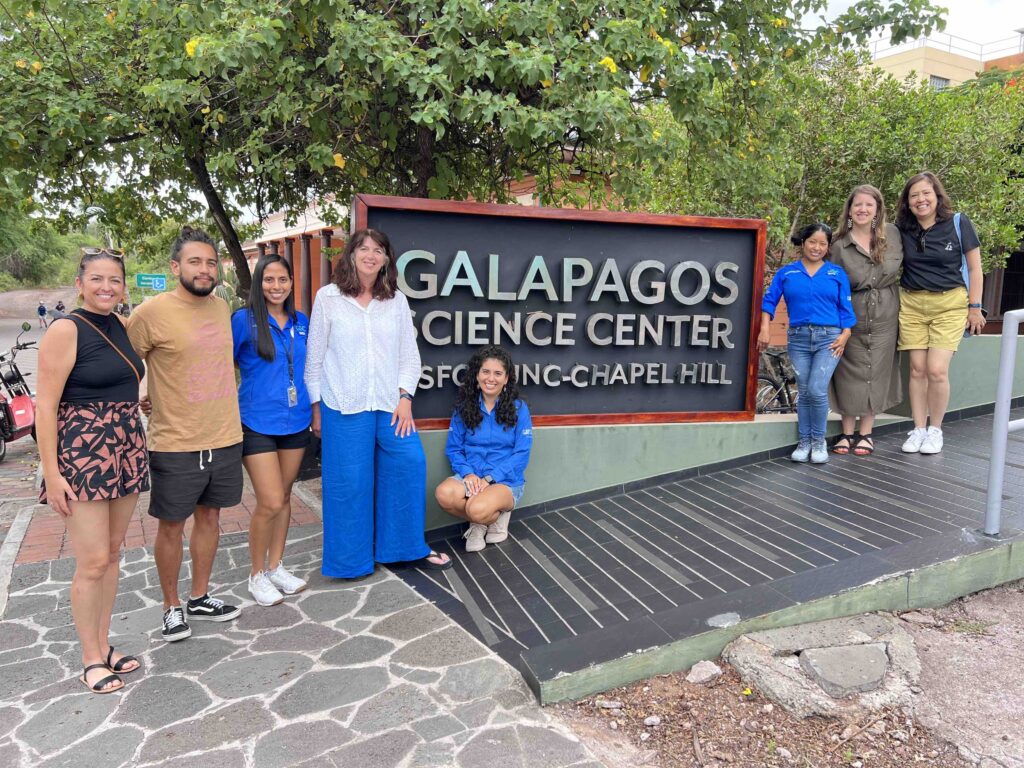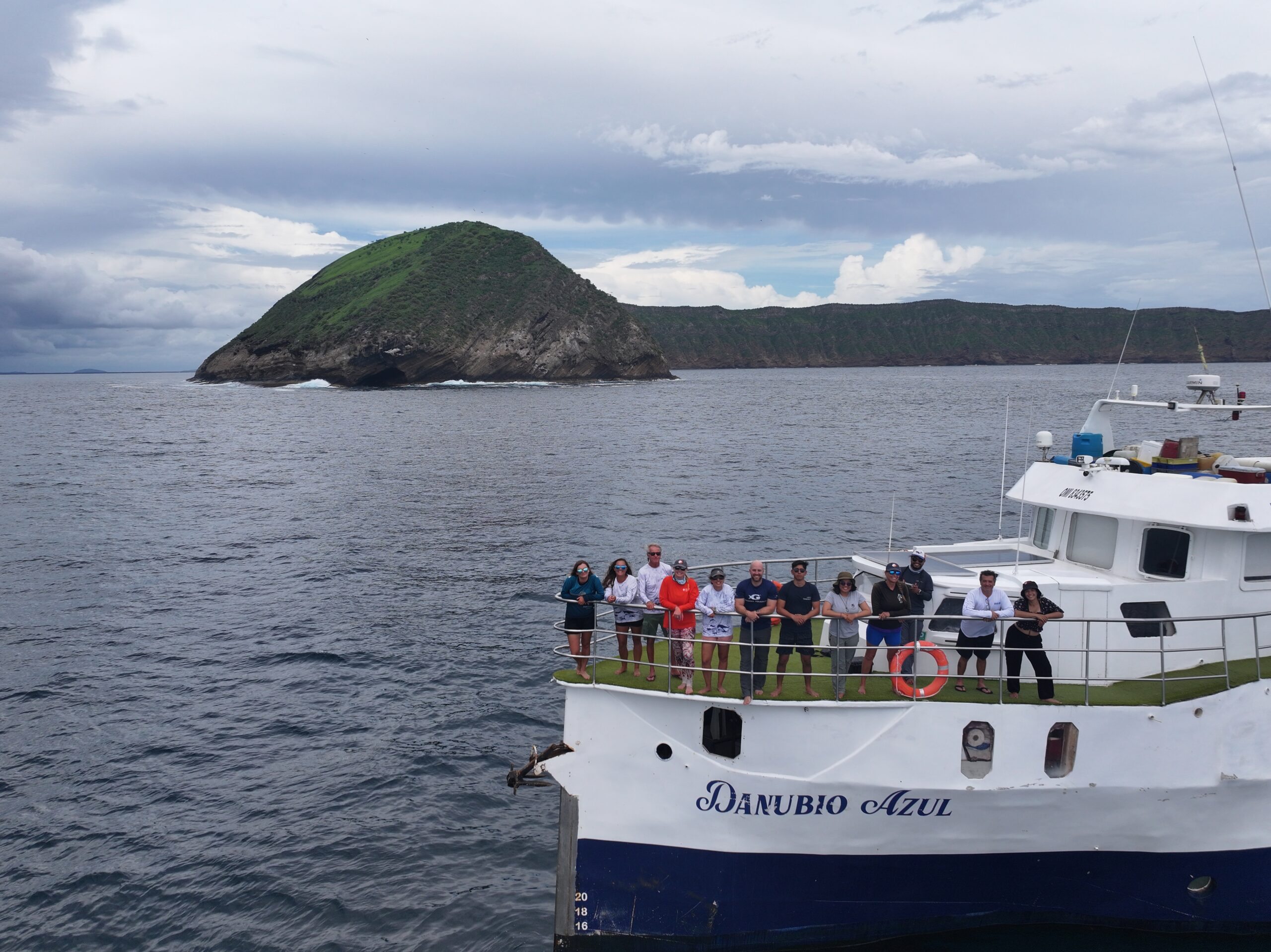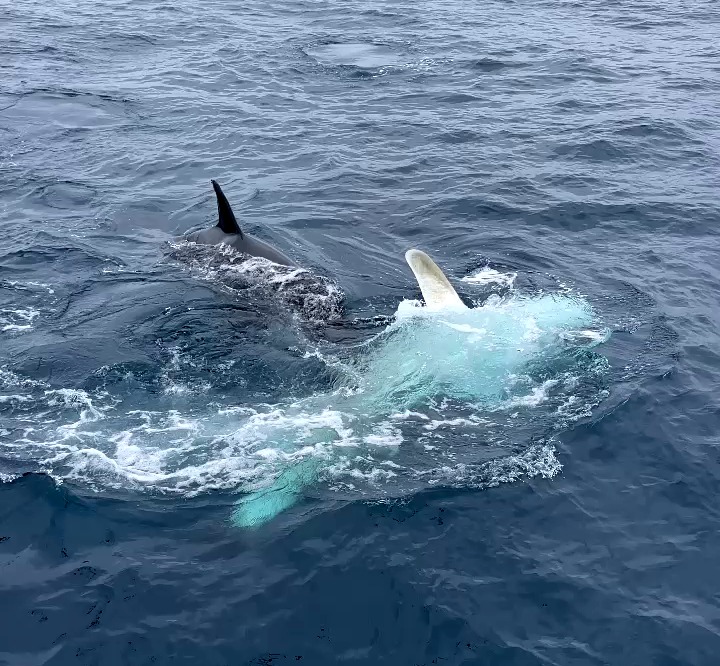A round-the-world endeavor to sustain the legacy of Charles Darwin brings his great-great-granddaughter to the archipelago to visit with Galapagos Science Center researchers.
Written by Kelly Weaver, Director of External Affairs & Communication at UNC Center for Galapagos Studies
Its 9 a.m. on the pier at San Cristóbal Island in the Galápagos, and a family of sea lions playfully swim together, jumping in the air and providing free entertainment for tourists and locals alike. In five minutes, the local ferry will arrive, and passengers will disembark from the two-hour, no-frills journey from Santa Cruz Island.
As the ferry docks, a special passenger disembarks — Sarah Darwin, the British botanist, conservationist, author, and scientific researcher who is also the great-great-granddaughter of Charles Darwin. It’s her first time returning to San Cristóbal in 24 years.
Though it’s been decades since Darwin — a researcher at the Museum für Naturkunde Berlin — has set foot on the archipelago, she’s found ways to stay involved in research there, like providing a welcome video for the World Summit on Island Sustainability.
She is also the ambassador for a project called DARWIN200, a voyage around the globe that retraces Charles Darwin’s journey and builds on his legacy to educate global audiences about the threats our planet faces and the inspiring conservation work that can save the natural world. To further associate their travels to the scientist’s famed explorations, participants make the trek in a 100-year-old refurbished three-mast schooner, reminiscent of the style of ship Darwin would have sailed on.
With plans to stop in the Galápagos in May 2024, Sarah Darwin took the opportunity to meet the crew of DARWIN200 at their stop in the islands to learn about current research conducted by the Galapagos Science Center (GSC), a joint effort between the UNC-Chapel Hill’s Center for Galapagos Studies and the Universidad San Francisco de Quito (USFQ) in Ecuador.
Her visit was filled with field research, inspiring talks to the local community, and a trip to Darwin’s Cove — where Charles Darwin landed during his travels.
Searching for tomatoes
One of the goals of the DARWIN200 project is to connect young, global conservationists to inspiring research projects where they can study a threatened habitat or an animal or plant that Charles Darwin studied during his famous voyage.
USFQ researcher Pieter van ’t Hof and his team’s work is a perfect example of the action Sarah Darwin hopes to see. Van ’t Hof’s group teamed up with her and a DARWIN200 leader to search for endemic and introduced tomatoes, similar to work Sarah did in the islands decades ago.
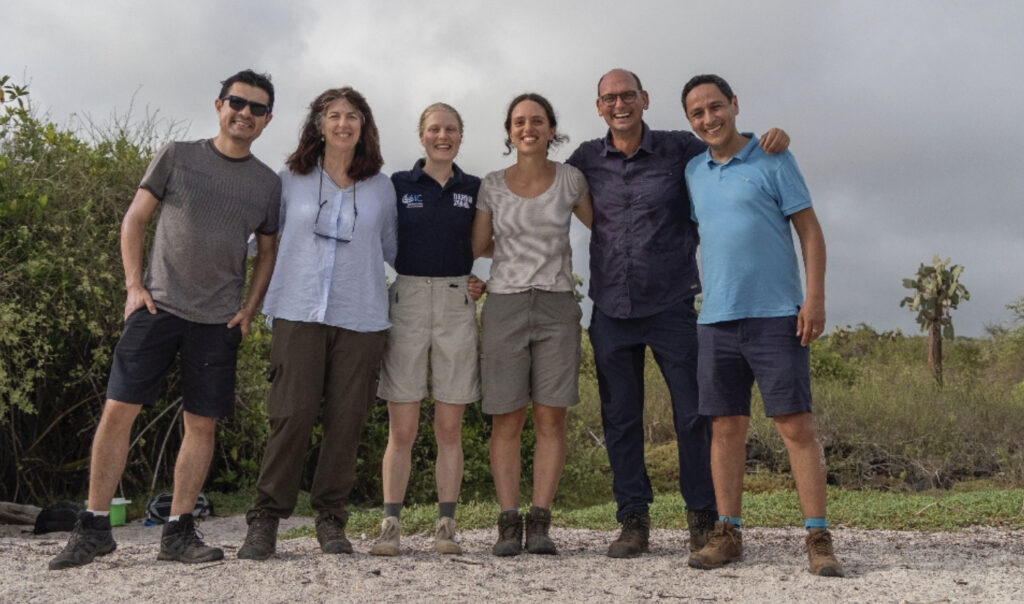
“The opportunity to have Sarah Darwin join the fieldwork days in Santa Cruz in search of these tomatoes in their natural habitats has been a cherished experience of our research team,” van ’t Hof says. “Knowing that Charles collected the Galápagos tomatoes for taxonomy purposes 200 years ago and that Sarah sampled them for genetic analyses 20 years ago, discovering a new tomato species has given a special dimension to our 2024 expedition.”
During their time in the field, the group collected samples to study the microbial communities surrounding the roots and leaves of these tomatoes that help them to survive the harsh environment of the islands.
“Science builds upon earlier discoveries and keeps evolving and embracing technological advances,” van ’t Hof says. “Being with Sarah on a common quest made us realize how important our scientific multidisciplinary collaborations are, and that throughout centuries, curiosity and spirit to discover will always remain.”
Sustaining Darwin’s legacy
Darwin’s next stop was touring GSC with Laboratories Manager Cristina Vintimilla, where she learned about research projects exploring how humans and the environment intersect.
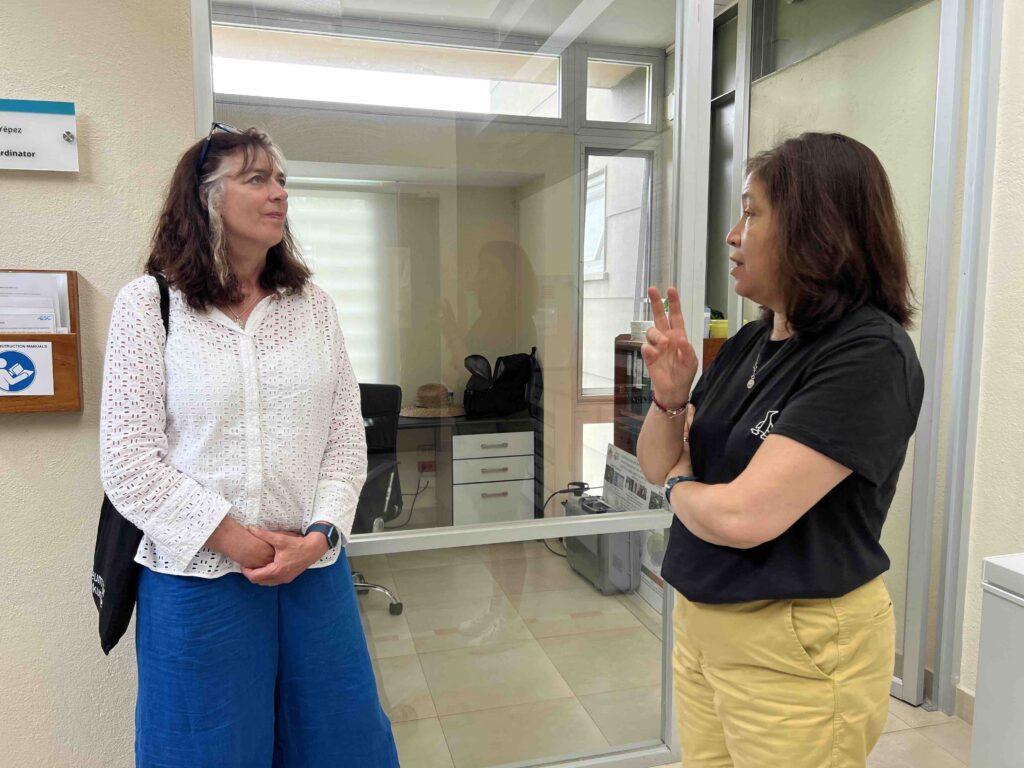
Darwin took particular interest in the Biobank project, which preserves the genetic resources of existing biodiversity and provides opportunities to study different aspects of evolutionary biology, population and ecosystem health, and environmental contaminants.
USFQ researcher and professor Maria de Lourdes Torres was excited to reunite with Darwin and share specifics about the Biobank and the many projects in the Microbiology and Genetics Lab.
“A few years ago, I met Sarah in Quito, Ecuador, and we discovered that we were both working with the endemic tomatoes of Galápagos, so it was a pleasure to meet her again and be able to talk about the importance of conserving these species and ecosystems,” de Lourdes Torres says. “Sarah was delighted to learn about our biobank initiative, and with her visit we strengthened our relationship for the good of science and education in these magical islands.”
Darwin also learned more about GSC’s work with the local community, including the many projects utilizing citizen science.
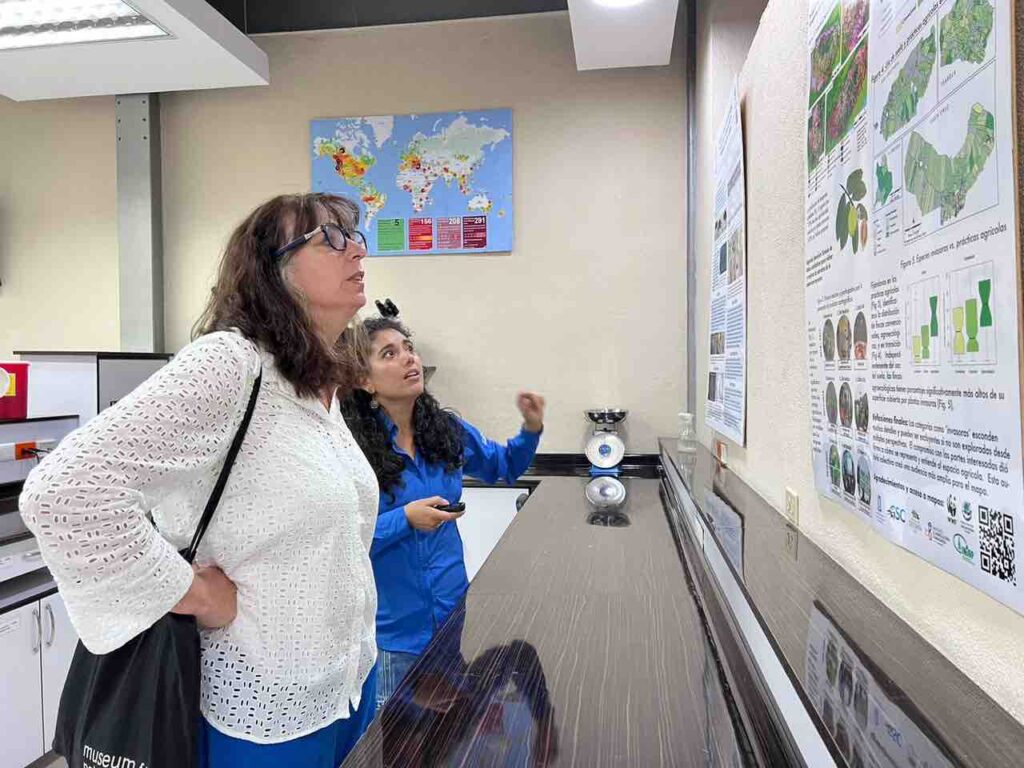
“Sarah’s visit served as a powerful motivator for all team members to continue their efforts towards the conservation and sustainability of the Galápagos Islands,” Vintimilla says. “During the tour of our facilities, Sarah emphasized the importance of our work with the local community through citizen science, where everyone has the opportunity to feel involved and be a part of our research projects.”
That same evening, Darwin delivered an inspiring talk to over 100 guests including researchers, DARWIN200 leaders, students, and members of the local community. She spoke about how nature was Charles Darwin’s inspiration and passion and how everyone should remember that all living things are related. She emphasized the importance of forming local knowledge-based communities and praised GSC for its engagement with the people of San Cristóbal.
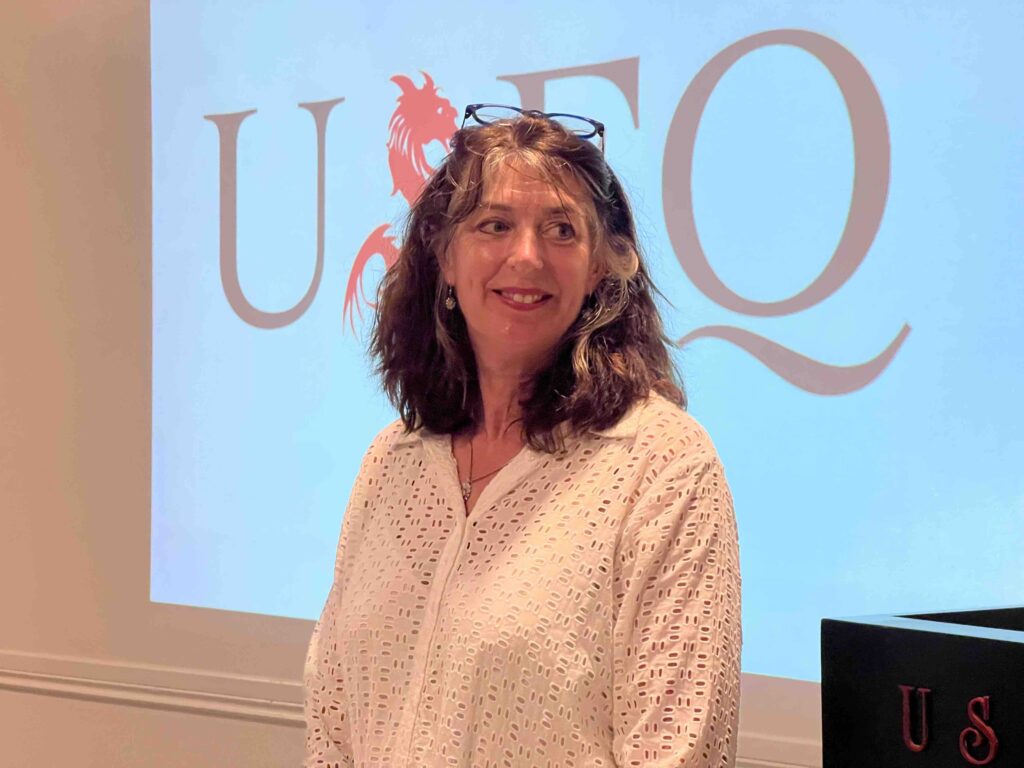
“It is incredibly important to listen to and learn the needs from local people so that we can all work together,” Darwin says. “We need to imagine a future where all people are involved with protecting nature. I’m not suggesting that we go back to nature but that we go forward with nature, where all decisions we make as communities have nature at is heart.”
The talk marked the concluding event for DARWIN200 before the vintage ship set sail for Rapa Nui, commonly known as Easter Island, in the South Pacific, retracing the voyage of Charles Darwin’s vessel, the HMS Beagle. But Sarah Darwin had more experiences awaiting her in the Galápagos.
Inspiring the next generation
The following day, Darwin experienced first-hand one of the many initiatives connecting the local community to science. She joined the club locally known as Chicas con Agallas, or Gills Club, on a field trip to Isla Lobos.
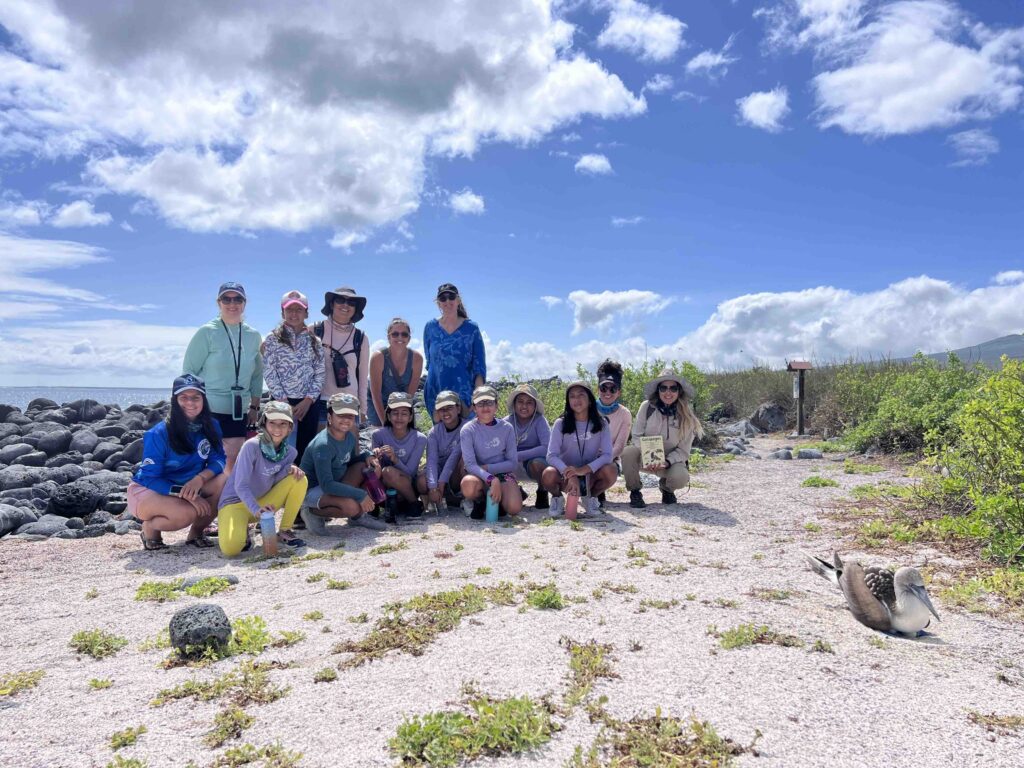
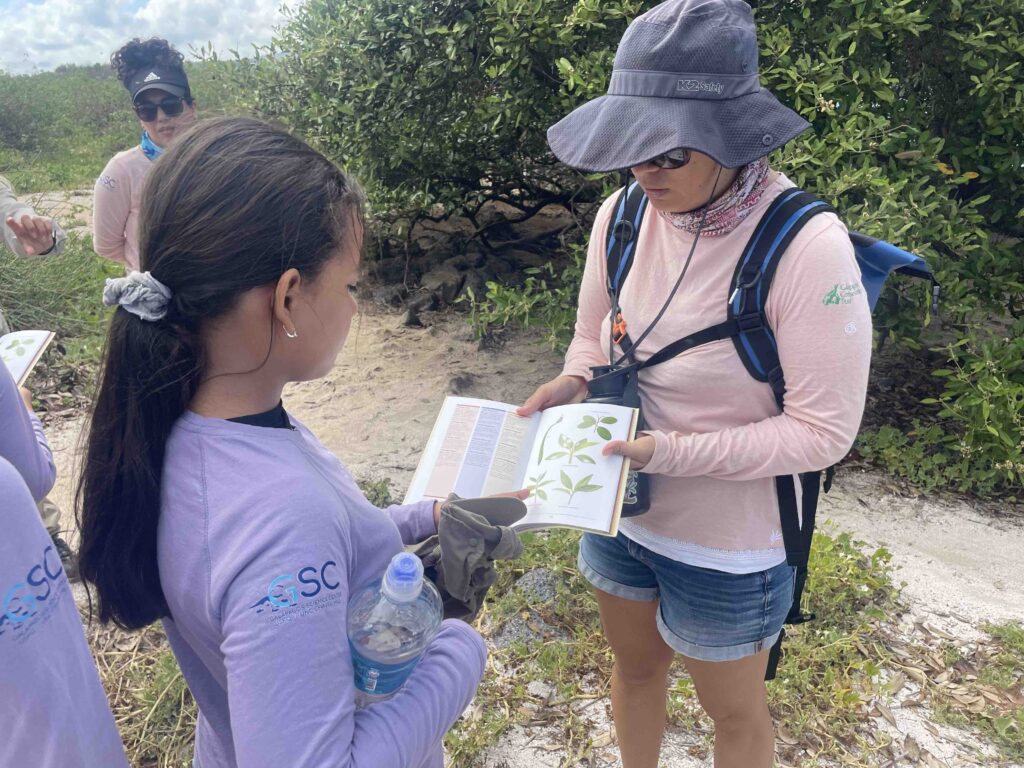
“Having Sarah join our fieldtrip made the experience even more memorable,” Pazmiño says. “For us, it is extremely important that the girls find inspiration from female scientists. Sarah was kind enough to gift the club with a couple of her Galápagos field guides — which she contributed to the illustrations of the flora and fauna — and we used these straight away to identify birds and plants in Isla Lobos.”
Ending at Darwin’s Cove
As Darwin’s busy 36 hours in the islands end, she makes a visit to Mirador Cerro Tijeretas, or Darwin’s Cove, the spot where her great-great-grandfather first landed on San Cristóbal. Just a 15-minute walk from GSC, it’s known by locals as the perfect place to swim and snorkel alongside curious sea lions and to watch playful frigate birds.
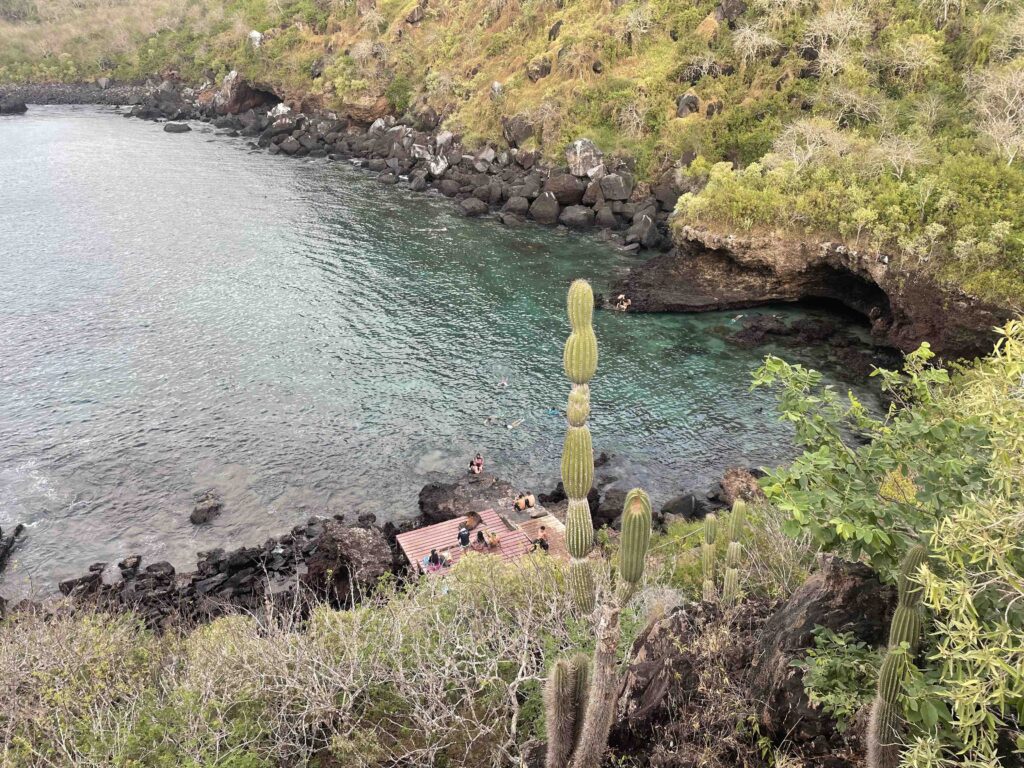
“The spot is like a postcard for humans respecting nature and coexisting beautifully,” Darwin says.
She takes out her copy of “On the Origin of Species,” and reads a passage aloud at the cove, the birthplace of evolutionary biology.
“There is grandeur in this view of life, with its several powers, having been originally breathed into a few forms or into one,” she reads. “And that, whilst this planet has gone cycling on according to the fixed law of gravity, from so simple a beginning endless forms most beautiful and most wonderful have been, and are being, evolved.”
Darwin calls it a truly a magical moment. But more importantly, it is reminder that all living things —even generations apart — are not only connected, but needed, to preserve our precious planet.
“And of course there is nowhere in the world where evolution is more beautiful than the Galápagos Islands,” Darwin says.

